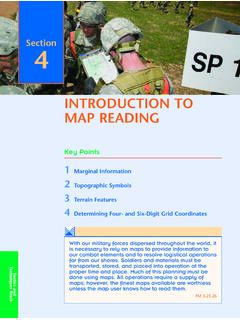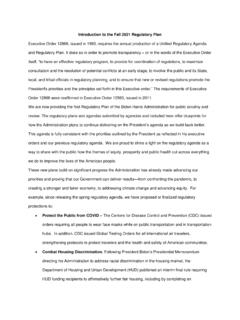Transcription of Introduction to the Millennium Development Goals
1 81 Key Indicators for Asia and the Pacific 2009 Millennium Development to the Millennium Development GoalsAt the Millennium Summit in September 2000, the largest gathering of world leaders in history adopted the United Nations Millennium Declaration, committing their nations to a new global partnership to reduce extreme poverty and setting out a series of targets, with a deadline of 2015. These have become known as the Millennium Development Goals (MDGs). In 2007, the MDG monitoring framework was revised to include four new targets agreed on by member states at the 2005 World Summit, namely, full and productive employment and decent work for all, access to reproductive health, access to treatment for HIV/AIDS, and protection of biodiversity.
2 The indicators for these new targets became effective in January 2008 and this is the framework used here to monitor progress toward achieving the first MDG targets the poor directly those living on less than one dollar a day while the next six focus on the underlying causes of poverty, such as lack of access to education, health care, and employment; gender inequality; poor housing conditions; and environmental degradation. The eighth goal is to develop a global partnership for Development , and focuses on how the industrialized countries can work with the poorer countries to enhance the latter s standard of living. The MDGs thus complement the Asian Development Bank s vision of a region free of poverty, and its mission to help its developing member countries reduce poverty and improve the quality of life of their citizens.
3 Box 1 lists the eight MDGs and the corresponding targets and indicators for monitoring 1 Millennium Development Goals Goals and Targets(from the Millennium Declaration)Indicators for Monitoring ProgressGoal 1: Eradicate extreme poverty and hungerTarget : Halve, between 1990 and 2015, the proportion of people whose income is less than one dollar a Proportion of population below $1 (PPP) per day Poverty gap ratio Share of poorest quintile in national consumptionTarget : Achieve full and productive employment and decent work for all, including women and young Growth rate of GDP per person Employment-to-population Proportion of employed people living below $1 (PPP) per Proportion of own-account and contributing family workers in total employment Target : Halve, between 1990 and 2015, the proportion of people who suffer from Prevalence of underweight children under-five years of Proportion of population below minimum level of dietary energy consumptionGoal 2: Achieve universal primary educationTarget.
4 Ensure that, by 2015, children everywhere, boys and girls alike, will be able to complete a full course of primary Net enrollment ratio in primary Proportion of pupils starting grade 1 who reach last grade of primary Literacy rate of 15 24 year-olds, women and menGoal 3: Promote gender equality and empower womenTarget : Eliminate gender disparity in primary and secondary education, preferably by 2005, and in all levels of education no later than Ratios of girls to boys in primary, secondary and tertiary Share of women in wage employment in the non-agricultural Proportion of seats held by women in national parliamentGoal 4: Reduce child mortalityTarget : Reduce by two-thirds, between 1990 and 2015, the under-five mortality rate Under-five mortality Infant mortality Proportion of 1-year-old children immunized against measlesGoal 5: Improve maternal health Target : Reduce by three quarters, between 1990 and 2015, the maternal mortality Maternal mortality Proportion of births attended by skilled health personnel Target : Achieve, by 2015, universal access to reproductive Contraceptive prevalence rate Adolescent birth Antenatal care coverage (at least one visit and at least four visits) Unmet need for family planning Goal 6: Combat HIV/AIDS, malaria and other diseasesTarget.
5 Have halted by 2015 and begun to reverse the spread of HIV prevalence among population aged 15 24 years Condom use at last high-risk Proportion of population aged 15 24 years with comprehensive correct knowledge of Ratio of school attendance of orphans to school attendance of non- orphans aged 10 14 yearsTarget : Achieve, by 2010, universal access to treatment for HIV/AIDS for all those who need Proportion of population with advanced HIV infection with access to antiretroviral drugs82 Key Indicators for Asia and the Pacific 2009 Introduction TO ThE Millennium Development GOALSBox 1 Millennium Development Goals (continued)Target : Have halted by 2015 and begun to reverse the incidence of malaria and other major diseases Incidence and death rates associated with Proportion of children under 5 sleeping under insecticide-treated Proportion of children under 5 with fever who are treated with appropriate anti-malarial Incidence, prevalence, and death rates associated with Proportion of tuberculosis cases detected and cured under directly observed treatment short course Goal 7: Ensure environmental sustainabilityTarget.
6 Integrate the principles of sustainable Development into country policies and programmes and reverse the loss of environmental Proportion of land area covered by CO2 emissions, total, per capita, and per $1 GDP (PPP) Consumption of ozone-depleting Proportion of fish stocks within safe biological Proportion of total water resources usedTarget : Reduce biodiversity loss, achieving, by 2010, a significant reduction in the rate of Proportion of terrestrial and marine areas Proportion of species threatened with extinctionTarget : Halve, by 2015, the proportion of people without sustainable access to safe drinking water and basic Proportion of population using an improved drinking water Proportion of population using an improved sanitation facilityTarget : By 2020, to have achieved a significant improvement in the lives of at least 100 million slum Proportion of urban population living in slums2 Goal 8: Develop a global partnership for developmentTarget : Develop further an open, rule-based, predictable, non-discriminatory trading and financial system Includes a commitment to good governance, Development and poverty reduction both nationally and internationallyTarget : Address the special needs of the least developed countries Includes.
7 Tariff and quota free access for the least developed countries exports; enhanced programme of debt relief for heavily indebted poor countries (HIPC) and cancellation of official bilateral debt; and more generous ODA for countries committed to poverty reductionTarget : Address the special needs of landlocked developing countries and small island developing States (through the Programme of Action for the Sustainable Development of Small Island Developing States and the outcome of the twenty-second special session of the General Assembly)Target : Deal comprehensively with the debt problems of developing countries through national and international measures in order to make debt sustainable in the long termSome of the indicators listed below are monitored separately for the least developed countries (LDCs), Africa, landlocked developing countries, and small island developing Development assistance (ODA) Net ODA, total and to the least developed countries, as percentage of OECD/DAC donors gross national Proportion of total bilateral, sector-allocable ODA of OECD/DAC donors to basic social services (basic education, primary health care, nutrition, safe water and sanitation)
8 Proportion of bilateral official Development assistance of OECD/DAC donors that is ODA received in landlocked developing countries as a proportion of their gross national ODA received in small island developing States as a proportion of their gross national incomesMarket Proportion of total developed country imports (by value and excluding arms) from developing countries and least developed countries, admitted free of Average tariffs imposed by developed countries on agricultural products and textiles and clothing from developing Agricultural support estimate for OECD countries as a percentage of their gross domestic Proportion of ODA provided to help build trade capacityDebt Total number of countries that have reached their HIPC decision points and number that have reached their HIPC completion points (cumulative) Debt relief committed under HIPC and MDRI Debt service as a percentage of exports of goods and servicesTarget.
9 In cooperation with pharmaceutical companies, provide access to affordable essential drugs in developing Proportion of population with access to affordable essential drugs on a sustainable basisTarget : In cooperation with the private sector, make available the benefits of new technologies, especially information and Telephone lines per 100 population Cellular subscribers per 100 Internet users per 100 populationAIDS = acquired immunodeficiency syndrome, CO2 = carbon dioxide, DAC = Development Assistance Committee, GDP = gross domestic product, HIV = human immunodeficiency virus, MDRI = Multilateral Debt Relief Initiative, OECD = Organisation for Economic Co-operation and Development , PPP = purchasing power For monitoring country poverty trends, indicators based on national poverty lines should be used, where The actual proportion of people living in slums is measured by a proxy.
10 Represented by the urban population living in households with at least one of the four characteristics: (a) lack of access to improved water supply, (b) lack of access to improved sanitation, (c) overcrowding (three or more persons per room), and (d) dwellings made of nondurable Indicators for Asia and the Pacific 2009 Millennium Development GOALSINTRODUCTION TO ThE Millennium Development GOALSTo assess progress, all indicators should be disaggregated by sex and urban and/or rural areas as far as possible. Not all indicators listed in Box 1 are available for all countries. Several new indicators were introduced in the revised monitoring framework. The accompanying tables in Part II contain the indicators currently available on a comparable basis for countries of the Asia and Pacific toward Achieving the Millennium Development GoalsThe MDGs discussed in Part II are taken in order according to the classification presented in Box 1.


















